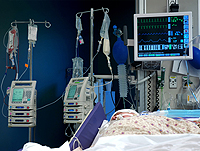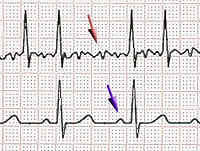Dr. Weeks’ Comment: As technology advances, we still need alert, competent and caring people to remain the primary agents of healing.
Top 10 Healthcare Technology Hazards for 2014
November 07, 2013
Receive an email from Medscape whenever new articles on this topic are available.
Alarm hazards and infusion pump medication errors are at the top of a list of technology hazards for 2014, according to a report from the ECRI Institute published in the November 2013 issue of Health Devices.
Each year, the ECRI Institute compiles a Top 10 list of technology safety hazards along with risk-mitigation strategies.
“Nothing on this list was a surprise,” Mary K. Logan, JD, CAE, president and CEO of the Association for the Advancement of Medical Instrumentation, told Medscape Medical News. “A lot of the hazards aren’t about the device itself; they’re about the device in use.”
Here are the top 10:
Alarm Hazards
“Alarm hazards is a national patient safety goal for 2014 of the Joint Commission,” Ms. Logan noted. In April 2013, the Joint Commission issued a Sentinel Event Alert after 98 alarm-related events occurred over a three-and-a-half-year period resulting in death for 80 patients and permanent loss of function for 13 others.
“Beyond alarm fatigue, patients could be put at risk if an alarm does not activate when it should, if the alarm signal is not successfully communicated to staff or does not include sufficient information about the alarm condition, or if the caregiver who receives the alarm signal is unable to respond or is unfamiliar with the proper response protocol,” the report finds.
A comprehensive alarm management program should be in place to minimize clinically insignificant or avoidable alarms and optimize alarm notification and response protocols.
Infusion Pump Medication Errors
“Patients can be highly sensitive to the amount of medication or fluid they receive from infusion pumps, and some medications are life-sustaining-or life-threatening if administered incorrectly,” the report states.
Infusion pump integration, where servers for infusion pumps are connected with other information systems, can provide an additional level of safety by helping to verify that the right patient is being given the right drug.
CT Radiation Exposures in Pediatric Patients
Computed tomography is a valuable diagnostic tool, but pediatric patients are particularly sensitive to ionizing radiation, which is delivered in comparatively high amounts. The risk can be lessened by using safer diagnostic tests such as traditional X-rays, magnetic resonance imaging, and ultrasound. Repeat testing should be avoided whenever possible, and the lowest possible amount of radiation should be used.
Data Integrity Failures in EHRs and Other Health IT Systems
“When designed and implemented well, an EHR [electronic health record] or other IT [information technology]-based system will provide complete, current, and accurate information about the patient and the patient’s care so that the clinician can make appropriate treatment decisions,” the report states. The presence of incorrect data can result in patient harm. System testing, adequate staff training, and a system for reporting errors are important steps in reducing risk associated with EHRs.
Occupational Radiation Hazards in Hybrid Operating Rooms
Hybrid operating rooms with advanced imaging capabilities are increasingly common, and may expose operating room staff to excessive radiation, particularly because staff may not be as alert to the hazards as staff in a dedicated radiology department. All hybrid operating rooms should have a radiation protection program in place.
Inadequate Reprocessing of Endoscopes and Surgical Instruments
“When reprocessing is not performed properly…patient cross-contamination is possible, potentially leading to the transmission of infectious agents and the spread of diseases such as hepatitis C, HIV, and tuberculosis,” the report notes.
Appropriate reprocessing protocols need to be in place, and staff must be trained in them and have sufficient time to perform reprocessing correctly.
Neglecting Change Management for Networked Devices and Systems
“[O]ne underappreciated consequence of system interoperability is that updates, upgrades, or modifications made to one device or system can have unintended effects on other connected devices or systems,” the report states. IT, clinical engineering, and nursing/medical personnel need to work together to prevent IT-related changes from having an adverse effect on networked medical devices and systems.
Risks to Pediatric Patients from “Adult” Technologies
“[D]ue to their smaller size and ongoing physiologic changes, children may suffer adverse effects when subjected to adult-oriented healthcare techniques,” the report finds. Pediatric-specific technologies should be used whenever possible.
Robotic Surgery Complications Due to Insufficient Training
The use of robotic surgery has increased dramatically in recent years. Training provided by the device supplier can familiarize users with the equipment, but hospitals need to verify that surgical staff develop procedure-specific skills, the report states.
Retained Devices and Unretrieved Fragments
“In October 2013, the Joint Commission issued a Sentinel Event Alert on the unintended retention of foreign objects, noting that 772 such incidents were reported to its Sentinel Event Database from 2005 to 2012, including 16 that resulted in death,” the report notes. Key preventive measures include visually inspecting devices before and after use, and following accepted surgical count procedures.
“Clinicians really need to realize that these hazards are really important for them to pay attention to because they are the only ones who can do something about reducing these hazards,” Ms. Logan explained. “Technology is a tool, but it’s not just a tool to take out of the box and start using it.”
Ms. Logan has disclosed no relevant financial relationships.
Health Devices. November 2013 report



